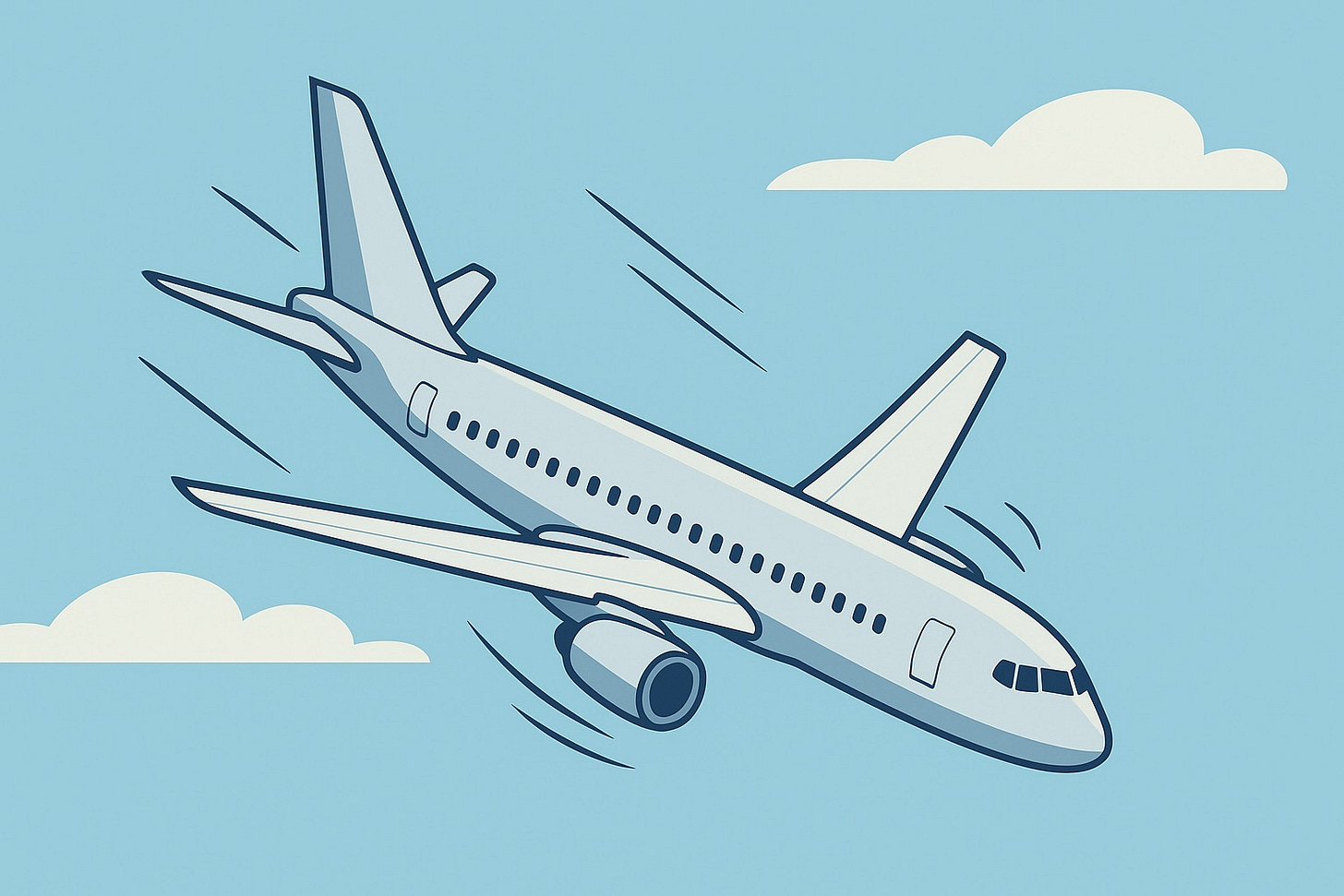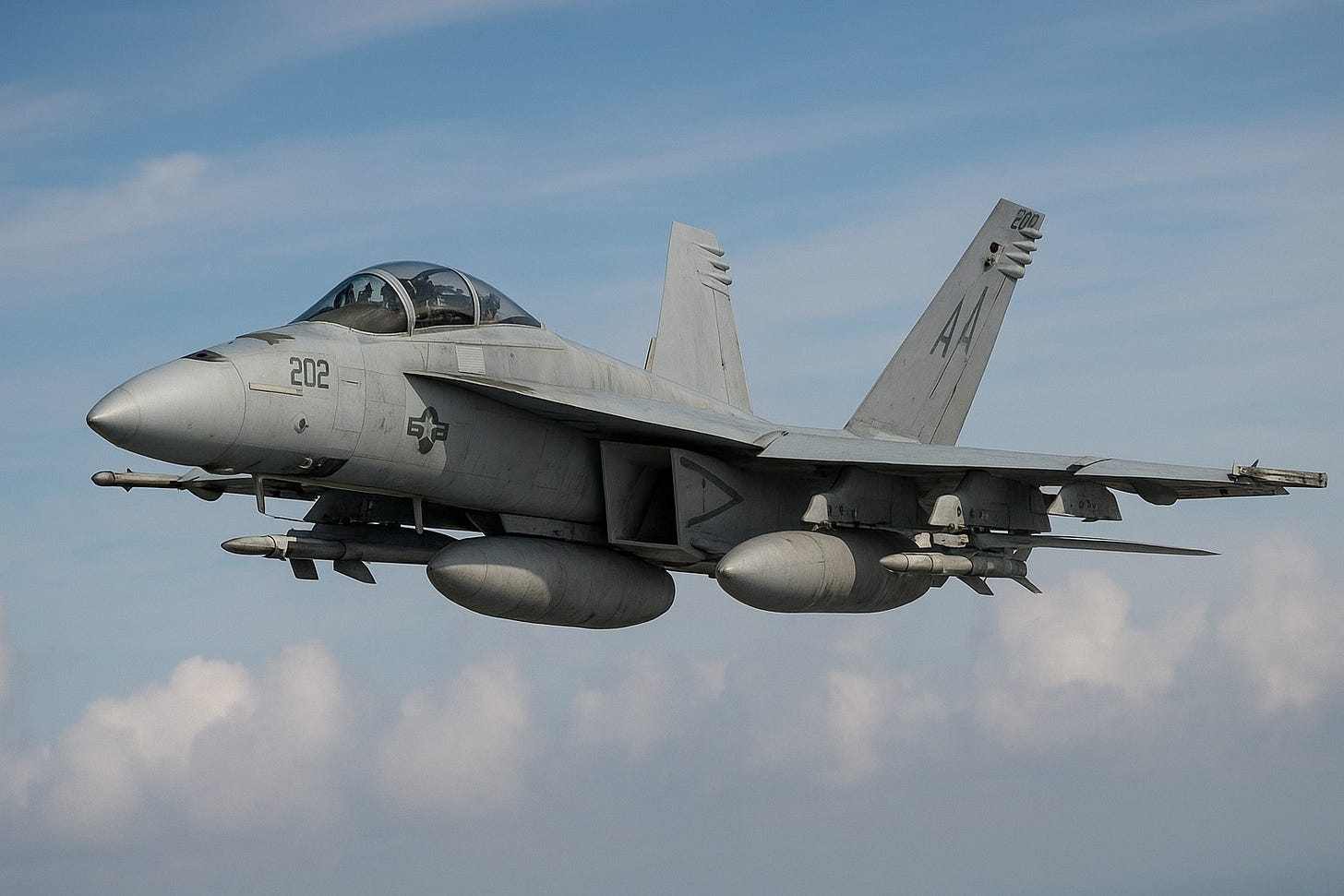The Stall: When Effort Stops Creating Lift
When a car stalls, the problem is mechanical — the engine stops, power is lost, and the vehicle can’t move forward. But when an airplane stalls, the engine usually keeps running. The failure isn’t in power, but in aerodynamics.
That distinction matters — not just in flight, but in how we live and lead.
The Physics of a Stall
In flight, lift is what keeps an aircraft in the air. It’s generated when air flows smoothly over and under the wing. The shape of the wing creates a pressure difference — lower pressure above, higher pressure below — and the plane stays aloft.
But as the pilot pulls back to climb, the angle of attack (the tilt of the wing relative to the airflow) increases. Up to a point, that’s useful: more lift, more climb. Yet there’s a critical threshold — usually around 15 to 18 degrees — where the airflow can no longer stay attached to the wing’s surface. The air breaks away, turbulence forms, and lift collapses.
That’s what’s called a stall.
The plane hasn’t lost power — the engine’s fine — but the wing has stopped doing its job. The harder the pilot tries to climb, the worse it gets.
And the way to recover feels completely counterintuitive: you have to lower the nose. Reduce the angle. Rebuild airflow. Then, once the lift returns, you can climb again safely.
The Human Equivalent
Many of us experience something similar — especially in high-performance environments or personal growth. We push, strive, stretch, and climb. The “engine” — motivation, ambition, even energy — keeps running. But over time, the way we’re approaching things becomes too steep. The flow breaks down.
We stop feeling lift — that natural sense of progress, creativity, or purpose. Instead, everything feels forced. Fatigue sets in. Frustration increases. We’re still moving, but not rising.
It’s not that the engine’s gone — we still care, we still want to perform — but our angle of attack has gone beyond what the system can sustain.
Recognising the Stall
In flight, you get early warning signs — a gentle vibration through the controls, a loss of responsiveness, a quiet alarm. In life, the warnings are subtler but just as real:
Concentration fades even though you’re trying harder.
Your effort no longer produces the same outcomes.
You feel more tension, less satisfaction.
Small issues feel like big obstacles.
It’s easy to misread these signals as weakness or lack of motivation. But often, it’s simply a loss of lift— you’re pushing at an angle that the “air” of your circumstances or capacity can’t support right now.
The Counterintuitive Recovery
The instinct when things start to slip is to double down — to add more hours, more pressure, more intensity. But just like a pilot in a stall, that reaction often makes things worse. The harder we pull back, the further lift collapses.
The real recovery lies in doing something that feels wrong at first: Ease off.
Lower the mental nose. Reduce the demands, take a breath, simplify priorities, and let flow return. It’s not laziness. It’s physics.
Once balance and rhythm return, performance becomes sustainable again — smoother, more efficient, and often stronger than before.
Lessons for Coaches and Leaders
For those who lead or develop others, understanding this dynamic is critical. People rarely “stall” because they’ve stopped caring. They stall because the conditions of lift — connection, clarity, balance — have broken down.
Our role isn’t always to push them harder, but to help them reconnect with flow:
Rebuild trust and direction (like restoring smooth airflow).
Create psychological space so ideas and confidence can reattach.
Encourage rest and recalibration without guilt.
Just as a pilot doesn’t panic at the first buffet of a stall, a good leader learns to recognise the signs early and guide recovery calmly.
A Stoic Reflection
Marcus Aurelius once wrote,
“Nothing natural is hurried, and nothing hurried is natural.”
Flight reminds us that performance isn’t purely about force — it’s about balance. The air will only hold you if you move through it with the right relationship between effort and angle.
You don’t need to stop flying. You just need to rediscover the conditions that allow lift to happen.
So when you feel your own warning signs — the shudder of fatigue, the dullness of overwork, the loss of connection — remember what pilots know instinctively:
You don’t recover from a stall by climbing harder. You recover by regaining flow.
Ease the nose down. Let the air reattach. Then climb again — steadier, quieter, and wiser than before.
When a car stalls, the problem is mechanical — the engine stops, power is lost, and the vehicle can’t move forward. But when an airplane stalls, the engine usually keeps running. The failure isn’t in power, but in aerodynamics.
That distinction matters — not just in flight, but in how we live and lead.
The Physics of a Stall
In flight, lift is what keeps an aircraft in the air. It’s generated when air flows smoothly over and under the wing. The shape of the wing creates a pressure difference — lower pressure above, higher pressure below — and the plane stays aloft.
But as the pilot pulls back to climb, the angle of attack (the tilt of the wing relative to the airflow) increases. Up to a point, that’s useful: more lift, more climb. Yet there’s a critical threshold — usually around 15 to 18 degrees — where the airflow can no longer stay attached to the wing’s surface. The air breaks away, turbulence forms, and lift collapses.
That’s what’s called a stall.
The plane hasn’t lost power — the engine’s fine — but the wing has stopped doing its job. The harder the pilot tries to climb, the worse it gets.
And the way to recover feels completely counterintuitive: you have to lower the nose. Reduce the angle. Rebuild airflow. Then, once the lift returns, you can climb again safely.
The Human Equivalent
Many of us experience something similar — especially in high-performance environments or personal growth. We push, strive, stretch, and climb. The “engine” — motivation, ambition, even energy — keeps running. But over time, the way we’re approaching things becomes too steep. The flow breaks down.
We stop feeling lift — that natural sense of progress, creativity, or purpose. Instead, everything feels forced. Fatigue sets in. Frustration increases. We’re still moving, but not rising.
It’s not that the engine’s gone — we still care, we still want to perform — but our angle of attack has gone beyond what the system can sustain.
Recognising the Stall
In flight, you get early warning signs — a gentle vibration through the controls, a loss of responsiveness, a quiet alarm. In life, the warnings are subtler but just as real:
Concentration fades even though you’re trying harder.
Your effort no longer produces the same outcomes.
You feel more tension, less satisfaction.
Small issues feel like big obstacles.
It’s easy to misread these signals as weakness or lack of motivation. But often, it’s simply a loss of lift— you’re pushing at an angle that the “air” of your circumstances or capacity can’t support right now.
The Counterintuitive Recovery
The instinct when things start to slip is to double down — to add more hours, more pressure, more intensity. But just like a pilot in a stall, that reaction often makes things worse. The harder we pull back, the further lift collapses.
The real recovery lies in doing something that feels wrong at first: Ease off.
Lower the mental nose. Reduce the demands, take a breath, simplify priorities, and let flow return. It’s not laziness. It’s physics.
Once balance and rhythm return, performance becomes sustainable again — smoother, more efficient, and often stronger than before.
Lessons for Coaches and Leaders
For those who lead or develop others, understanding this dynamic is critical. People rarely “stall” because they’ve stopped caring. They stall because the conditions of lift — connection, clarity, balance — have broken down.
Our role isn’t always to push them harder, but to help them reconnect with flow:
Rebuild trust and direction (like restoring smooth airflow).
Create psychological space so ideas and confidence can reattach.
Encourage rest and recalibration without guilt.
Just as a pilot doesn’t panic at the first buffet of a stall, a good leader learns to recognise the signs early and guide recovery calmly.
A Stoic Reflection
Marcus Aurelius once wrote,
“Nothing natural is hurried, and nothing hurried is natural.”
Flight reminds us that performance isn’t purely about force — it’s about balance. The air will only hold you if you move through it with the right relationship between effort and angle.
You don’t need to stop flying. You just need to rediscover the conditions that allow lift to happen.
So when you feel your own warning signs — the shudder of fatigue, the dullness of overwork, the loss of connection — remember what pilots know instinctively:
You don’t recover from a stall by climbing harder. You recover by regaining flow.
Ease the nose down. Let the air reattach. Then climb again — steadier, quieter, and wiser than before.



